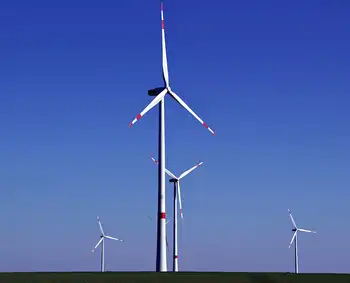EPA releases final GHG endangerment finding
By Electricity Forum
CSA Z462 Arc Flash Training - Electrical Safety Essentials
Our customized live online or in‑person group training can be delivered to your staff at your location.

- Live Online
- 6 hours Instructor-led
- Group Training Available
The EPA issued its proposed endangerment finding on April 17, and held a 60-day public comment period that ended in June. The EPA received more than 380,000 public comments, including written comments and testimony at two public hearings in Arlington, Virginia, and Seattle, Washington, before releasing its final ruling.
The Administrator made two distinct findings regarding GHGs under section 202(a) of the Clean Air Act (CAA):
• Endangerment Finding – The current and projected concentrations of the six key GHGs — carbon dioxide (CO2), methane (CH4), nitrous oxide (N2O), hydrofluorocarbons (HFCs), perfluorocarbons (PFCs) and sulfur hexafluoride (SF6)—in the atmosphere threaten the public health and welfare of current and future generations.
• Cause or Contribute Finding – The combined emissions of these six GHGs from new motor vehicles and new motor vehicle engines contribute to the GHG pollution that threatens public health and welfare.
According to EPA Administrator Lisa Jackson, “These long-overdue findings cement 2009’s place in history as the year when the United States government began addressing the challenge of greenhouse gas pollution and seizing the opportunity of clean energy reform.” In connection with the findings, the EPA published the following statement:
“GHGs are the primary driver of climate change, which can lead to hotter, longer heat waves that threaten the health of the sick, poor or elderly; increases in ground-level ozone pollution linked to asthma and other respiratory illnesses; as well as other threats to the health and welfare of Americans.”
The EPAÂ’s ruling is a response to the 2007 Supreme Court of the United States decision Massachusetts v. EPA, which found that the EPA has the statutory authority to determine whether the emissions of GHGs from new motor vehicles cause or contribute to air pollution threatening public health and welfare. While the final endangerment finding does not impose any emissions reduction requirements, it permits the EPA to finalize the proposed GHG standards for light-duty vehicles, which were proposed in a joint rulemaking with the U.S. Department of TransportationÂ’s National Highway Safety Administration in September 2009 and are expected to be finalized in March 2010.
This announcement follows a recent trend of EPA activity aimed at curtailing GHG emissions. In late September 2009, the EPA published the Final Mandatory Reporting of Greenhouse Gases Rule, which requires certain facilities and industries to report their annual GHG emissions. The EPA also announced a proposed rule that requires operating permits for large stationary sources, such as coal-burning power plants and refineries that produce 25,000 tons of GHGs or more per year.
The final endangerment decision may open the door to more EPA regulation regarding GHG emissions, placing pressure on Congress to act on pending climate change legislation. A bill passed in the House of Representatives in June 2009 prohibits the EPA from using the CAA to regulate GHG emissions, instead relying on a cap-and-trade program.
However, a similar bill in the Senate has stalled in the midst of the current health care debate, and Democratic leadership has expressed doubts that it will come to a vote before the spring. Administrator Jackson has refused to reveal whether the EPA is planning on more action before the Senate tackles this issue. The Competitive Enterprise Institute, a think tank, has indicated that it intends to challenge the EPA's findings in court, and other challenges may follow.











